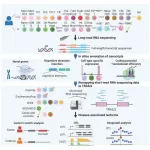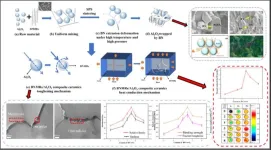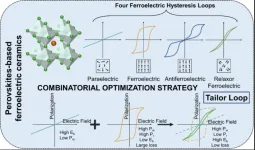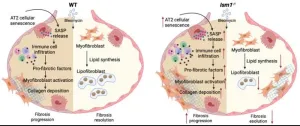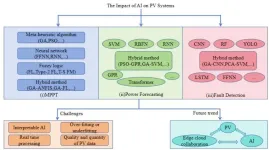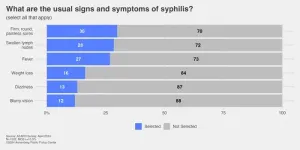(Press-News.org) BOSTON – Cardiovascular disease (CVD) is the leading cause of death worldwide, accounting for approximately one in every three deaths, with more than 20 million deaths reported in 2021 according to a 2024 World Heart Federation report. Improvements in heart disease prevention, treatment and intervention have led to substantial declines in cardiovascular deaths in recent decades, but climate change caused by the continued combustion of fossil fuels may undermine this progress. Over the last century, NASA confirms the average global temperature has risen by more than two degrees Fahrenheit, leading to long-term shifts in average weather patterns, disturbance of ecosystems, and rising sea levels. Additionally, the 10 hottest years on record have all occurred in the past decade.
In a new study, researchers at Beth Israel Deaconess Medical Center (BIDMC) conducted a systematic review of 492 observational studies to determine whether there is a link between climate change-related environmental stressors and cardiovascular disease. The investigators found that extreme temperatures and hurricanes are strongly associated with increased CVD mortality and incidence of disease, and that older adults, individuals from racial and ethnic minoritized populations, and those from lower wealth communities are disproportionately affected. The findings appear in JAMA Cardiology.
“Climate change is already affecting our cardiovascular health; exposure to extreme heat can adversely affect heart rate and blood pressure; exposure to ozone or wildfire smog can trigger systemic inflammation; living through a natural disaster can cause psychological distress; and hurricanes and floods may disrupt healthcare delivery through power outages and supply chain disruptions; and in the long-term, the changing climate is projected to produce declines in agricultural productivity and the nutritional quality of the food supply, which could also compromise cardiovascular health,” said corresponding author Dhruv S. Kazi, associate director of the Richard A. and Susan F. Smith Center for Outcomes Research at BIDMC. “We know that these pathways have the potential to undermine the cardiovascular health of the population, but the magnitude of the impact, and which populations will be particularly susceptible, need further study.”
Kazi and colleagues screened nearly 21,000 peer-reviewed studies published between 1970 and 2023 that evaluated associations between acute cardiovascular events, cardiovascular mortality and CVD healthcare utilization and climate change-related phenomena, including extreme temperatures; wildfires and the resulting air pollution; ground-level ozone; extreme weather events including hurricanes dust storms and droughts; sea level rise; salt-water intrusion, and climate-related migration.
Of the 492 global observational studies that met the team’s inclusion criteria, 182 examined extreme temperature, 210 looked at the effects of ground-level ozone, 45 investigated wildfire smoke and 63 studied extreme weather events such as hurricanes, dust storms and droughts. The studies presented findings from 30 high-income and 17 middle-income countries and one low-income country.
The investigators determined that exposure to extreme temperature was strongly linked with increased incidence of cardiovascular disease and CVD mortality, but the impact varied depending on the temperature and the duration of exposure. Extreme weather events such as tropical storms, hurricanes/cyclones, floods and mudslides were also linked to increased cardiovascular risk, which often outlasted the severe weather event by months, if not years. Kazi and colleagues note that one study of Hurricane Sandy, which caused close to $20 billion dollars' worth of damage in New York City alone in 2012, showed that the risk of death from cardiovascular disease remained elevated up to 12 months after the storm. Some studies showed that exposure to wildfire smoke – which can affect populations hundreds of miles from the source– increased the risk of events like cardiac arrest, while others did not find such an effect.
"Given how many Americans are now being exposed to wildfire smoke every year—as was the case of wildfire smoke from Canadian fires affecting New York city last summer—further studies to accurately quantify this risk are urgently needed,” said Kazi.
The researchers also found concerning gaps in knowledge with respect to climate change-related impacts on cardiovascular risk in lower income nations. Just one study was conducted in a low-income country and only five were based in Africa, where climate change is expected to have disproportionate effects. “Though data on outcomes on low-income countries are lacking, our study shows that several of the environmental stressors that are already increasing in frequency and intensity with climate change are linked with increased cardiovascular risk,” said senior author, Mary B. Rice, MD, MPH, a pulmonary and critical care physician in the division of Pulmonary and Critical Care Sleep Medicine at BIDMC.
The authors note that these findings suggest that clinicians should consider evaluating each patient’s CVD risk from climate change-exposures based on individual, community, and health system attributes. Clinicians should also be aware of environmental exposure-related cardiovascular risk in their community, whether related to extreme temperature, wildfire smoke, or extreme weather events. For instance, in areas prone to hurricanes or flooding, clinicians should assist patients in developing contingency plans to ensure uninterrupted access to medications and healthcare as needed. And health systems should evaluate the resilience of their infrastructure to climate change. Kazi added “Climate change is already adversely affecting cardiovascular health in the U.S. and worldwide. Urgent action is needed to mitigate climate change-related cardiovascular risk, particularly among our most vulnerable populations.”
Co-authors included Chia-Liang Liu, MS, Nora M. Al-Roub, MBBS, Richard S. Chaudhary, MD, Daniel B. Kramer, MD, MPH, Diane E. Young, MLS, Megan McNichol, MLS, AHIP, and Mary B. Rice, MD, MPH of BIDMC; Ethan Katznelson, MD, of Weill Cornell Medical Center; Loretta Mickley, PhD, School of Engineering and Applied Sciences, Harvard University; Wayne E. Cascio, MD, of the United States Environmental Protection Agency; and Aaron S. Bernstein, MD, MPH, of Boston Children’s Hospital.
This work was supported by the Burke Fellowship from the Harvard Global Health Institute, Harvard University, and institutional funds from the Richard A. and Susan F. Smith Center for Outcomes Research at BIDMC. The authors declare no competing interests.
About Beth Israel Deaconess Medical Center
Beth Israel Deaconess Medical Center is a leading academic medical center, where extraordinary care is supported by high-quality education and research. BIDMC is a teaching affiliate of Harvard Medical School, and consistently ranks as a national leader among independent hospitals in National Institutes of Health funding. BIDMC is the official hospital of the Boston Red Sox.
Beth Israel Deaconess Medical Center is a part of Beth Israel Lahey Health, a health care system that brings together academic medical centers and teaching hospitals, community and specialty hospitals, more than 4,700 physicians and 39,000 employees in a shared mission to expand access to great care and advance the science and practice of medicine through groundbreaking research and education.
END
Climate change-related disturbances linked to worse cardiovascular health, researchers show
Older adults, racial and ethnic minority groups and lower wealth communities were disproportionately affected
2024-06-12
ELSE PRESS RELEASES FROM THIS DATE:
Groundbreaking study uncovers new insights into alternative splicing and disease associations
2024-06-12
Tokyo Medical and Dental University (TMDU) researchers harness long-read RNA sequencing to decode genetic intricacies and disease links.
Tokyo, Japan – Alternative splicing, a process where a single gene can give rise to multiple different proteins via inclusion or exclusion of certain segments of the gene sequence, is known to occur in over 90% of human genes. This leads to the production of numerous transcript isoforms (splice variants of an expressed gene) crucial for protein function and cellular processes. Despite previous research on mechanisms underlying alternative splicing ...
A review of high-performance cementitious composites in bridge deck durability
2024-06-12
Many modern bridges use orthotropic steel bridge decks (OSBD), the decks being the surface sections of the bridge. OSBDs were designed to be lightweight and economical. However, this design has shown increasing issues with pavement cracking and fatigue damage at the welds that connect the bridge deck to the bridge superstructure. Fatigue damage is damage that accrues over time with use.
To ameliorate these problems, a new bridge deck was designed. The composite bridge deck system (CBD) added a layer of concrete to decrease the probability of damage due to fatigue. More recently the use of high-performance materials, such as ultra-high-performance ...
Boron nitride microribbons strengthened and toughened alumina composite ceramics with excellent mechanical, dielectric, and thermal conductivity properties
2024-06-12
In recent years, the high complexity of integrated devices has made heat accumulation increasingly critical and has resulted in higher heat dissipation requirements for substrates and packaging materials. In this study, boron nitride microribbon (BNMR)/Al2O3 composite ceramics are prepared using spark plasma sintering (SPS). This study examines the effect of varying the amount of toughened phase BNMR on the density, mechanical properties, dielectric constant, and thermal conductivity of BNMR/Al2O3 composite ceramics while also exploring the mechanisms behind the toughening and increased ...
New perspectives of perovskites-based ferroelectric ceramics for energy storage applications
2024-06-12
With the escalating impacts of climate change and depletion of resources, dielectric capacitors are emerging as promising high-demanded candidates for high-performance energy storage devices. However, due to the shortcomings of various dielectric ceramics (e.g., paraelectrics, ferroelectrics, and antiferroelectrics), their low polarizability, low breakdown strength, and large hysteresis loss limit their standalone use in the advancing of energy storage ceramics. Therefore, synthesizing novel perovskite-based materials that exhibit high energy density, high energy efficiency, and low loss is crucial in achieving superior energy ...
Ism1 deficiency in mice exacerbates bleomycin-induced pulmonary fibrosis with enhanced cellular senescence and delayed fibrosis resolution
2024-06-12
Idiopathic pulmonary fibrosis (IPF) is a chronic and progressive lung disease marked by the thickening and scarring of lung tissue with unclear etiology. Affecting around five million people worldwide, IPF causes severe respiratory problems and greatly diminishes the quality of life. Despite ongoing medical research, the exact cause of IPF is still unknown, and treatment options are limited. The prognosis for IPF is grim, with only about 20% of patients surviving five years post-diagnosis, highlighting the critical need for better therapies and a deeper understanding ...
Permeable carbon fiber based thermoelectric film with exceptional EMI shielding performance and sensor capabilities
2024-06-12
Thermoelectric technology, which enables the direct conversion of heat into electricity, has emerged as a promising alternative energy source. Notably, this technology can efficiently convert body heat into electrical energy, garnering significant attention in the field of wearable electronics. However, the dense structure of most thermoelectric materials results in ultra-low moisture permeability. In practical applications, insufficient moisture permeability can trap heat and humidity, fostering bacterial growth and potentially causing skin lesions. Hence, developing thermoelectric materials with superior moisture permeability is crucial.
A team led by ...
Sweeping review reveals impact of integrating artificial intelligence technologies into photovoltaic systems
2024-06-12
Artificial intelligence is poised to bring photovoltaic systems into a new era through revolutionary improvements in efficiency, reliability, and predictability of solar power generation.
In their paper published on May 8 in CAAI Artificial Intelligence Research, a research team from Chinese and Malaysian universities explored the impact of artificial intelligence (AI) technology on photovoltaic (PV) power generation systems and their applications from a global perspective.
“The overall message is an optimistic outlook on how AI can lead to more sustainable and efficient energy solutions,” said Xiaoyun Tian from ...
Syphilis cases are rising, but many people don’t know symptoms
2024-06-12
PHILADELPHIA – Syphilis cases are on the rise around the globe, but many Americans don’t know the symptoms.
In January, the Centers for Disease Control and Prevention (CDC) reported that syphilis cases had risen 80 percent over the five years from 2018 to 2022, totaling more than 200,000 in 2022, the last year for which data are available.
Yet just over half of U.S. adults (54%) know that a case of syphilis can be permanently cured and most either mistakenly think there is a vaccine to prevent it (16%) or are unsure (45%), according to the Annenberg Public Policy ...
Nancy Kanwisher shares 2024 Kavli Prize in Neuroscience
2024-06-12
The Norwegian Academy of Science and Letters today announced the 2024 Kavli Prize Laureates in the fields of astrophysics, nanoscience, and neuroscience. The 2024 Kavli Prize in Neuroscience honors McGovern Investigator and MIT neuroscientist Nancy Kanwisher, UC Berkeley neurobiologist Doris Tsao, and Rockefeller University neuroscientist Winrich Freiwald for their discovery of a highly localized and specialized system for representation of faces in human and non-human primate neocortex. The neuroscience laureates ...
2024 Kavli Prize Laureates named in astrophysics, nanoscience and neuroscience
2024-06-12
Eight scientists from three countries are honored for their research that has broadened our understanding of the big, the small and the complex.
June 12, 2024 (Oslo, Norway) — The Norwegian Academy of Science and Letters today announced the 2024 Kavli Prize Laureates in the fields of astrophysics, nanoscience and neuroscience. Eight scientists from three countries are honored for their research that has broadened our understanding of the big, the small and the complex. The laureates in each field will share $1 million USD.
The ...
LAST 30 PRESS RELEASES:
Sports injuries sustained during your period might be more severe
World's first successful 2 Tbit/s free-space optical communication using small optical terminals mountable on satellites and HAPS
Can intimate relationships affect your heart? New study says ‘yes’
Scalable and healable gradient textiles for multi‑scenario radiative cooling via bicomponent blow spinning
Research shows informed traders never let a good climate crisis go to waste
Intelligent XGBoost framework enhances asphalt pavement skid resistance assessment
Dual-function biomaterials for postoperative osteosarcoma: Tumor suppression and bone regeneration
New framework reveals where transport emissions concentrate in Singapore
NTP-enhanced lattice oxygen activation in Ce-Co catalysts for low-temperature soot combustion
Synergistic interface engineering in Cu-Zn-Ce catalysts for efficient CO2 hydrogenation to methanol
COVID-19 leaves a lasting mark on the human brain
Scientists use ultrasound to soften and treat cancer tumors without damaging healthy tissue
Community swimming program for Black youth boosts skills, sense of belonging, study finds
Specific depressive symptoms in midlife linked to increased dementia risk
An ‘illuminating’ design sheds light on cholesterol
Who is more likely to get long COVID?
Study showcases resilience and rapid growth of “living rocks”
Naval Research Lab diver earns Office of Naval Research 2025 Sailor of the Year
New Mayo-led study establishes practical definition for rapidly progressive dementia
Fossil fuel industry’s “climate false solutions” reinforce its power and aggravate environmental injustice
Researchers reveal bias in a widely used measure of algorithm performance
Alcohol causes cancer. A study from IOCB Prague confirms damage to DNA and shows how cells defend against it
Hidden viruses in wastewater treatment may shape public health risks, study finds
Unlock the power of nature: how biomass can transform climate mitigation
Biochar reshapes hidden soil microbes that capture carbon dioxide in farmland
Reducing saturated fat intake shows mortality benefit, but only in high-risk individuals
Manta rays create mobile ecosystems, study finds
Study: Mixed results in using lipoic acid to treat progressive multiple sclerosis
Norbert Holtkamp appointed director of Fermi National Accelerator Laboratory
New agentic AI platform accelerates advanced optics design
[Press-News.org] Climate change-related disturbances linked to worse cardiovascular health, researchers showOlder adults, racial and ethnic minority groups and lower wealth communities were disproportionately affected
